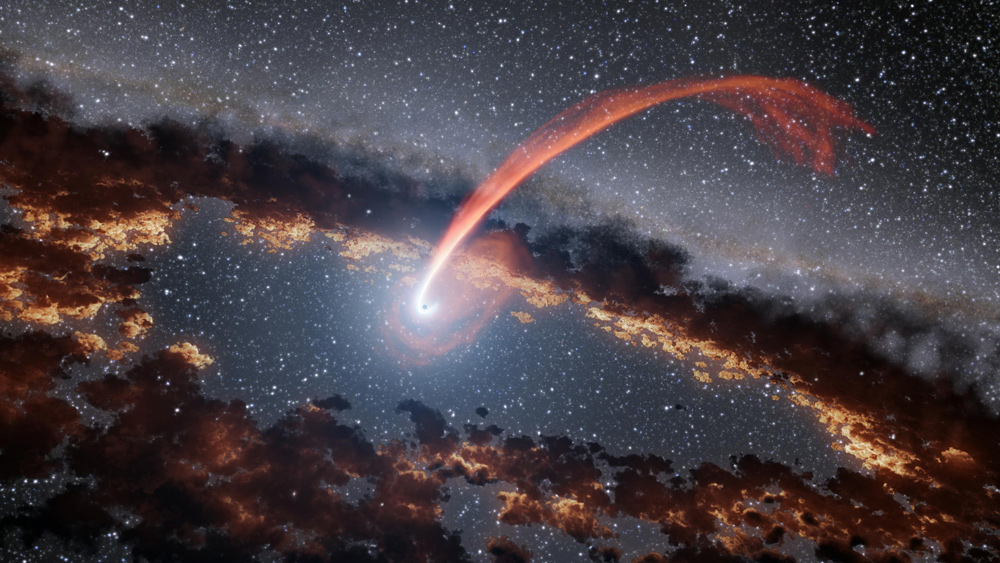
As a star is devoured by a supermassive black hole, it emits a bright stream of material called a tidal disruption flare.
Credit: NASA/JPL-Caltech
A doomed star falling into a black hole may produce a flare of light that “echoes” through nearby dust clouds, according to two new studies.
Monster black holes can be millions of times more massive than the sun. If a star happens to wander too close, the black hole’s extreme gravitational forces can tear the star into shreds, in an event called “stellar tidal disruption.”
This kind of stellar destruction may also spit out a bright flare of energy in the form of ultraviolet and X-ray light. The two new studies examine how surrounding dust absorbs and re-emits the light from those flares, like a cosmic echo, according to a statement from NASA’s Jet Propulsion Laboratory (JPL). [Millions of Black Holes Seen by WISE Telescope (Photos)]
“This is the first time we have clearly seen the infrared-light echoes from multiple tidal disruption events,” Sjoert van Velzen, a postdoctoral fellow at Johns Hopkins University and lead author of one study, said in the statement.
The new studies use data from NASA’s Wide-field Infrared Survey Explorer (WISE). The NASA study led by van Velzen used these “echoes” to identify three black holes in the act of devouring stars. The second study, led by Ning Jiang, a postdoctoral researcher at the University of Science and Technology of China, identified a potential fourth light echo.
Flares emitted from stellar tidal disruptions are extremely energetic and “destroy any dust” that is within the immediate neighborhood, according to NASA. However, a patchy, spherical web of dust that resides a few trillion miles (half a light-year) from the black hole can survive the flare and absorb light released from the star being gobbled up.
“The black hole has destroyed everything between itself and this dust shell,” van Velzen said in the statement. “It’s as though the black hole has cleaned its room by throwing flames.”
The absorbed light heats the more distant dust, which in turn gives off infrared radiation that the WISE instrument can measure. These emissions can be detected for up to a year after the flare is at its brightest, the statement said. Scientists are able to characterize and locate the dust by measuring the delay between the original light flare and the subsequent echoes, according to the NASA study, which will be published in the Astrophysical Journal.
“Our study confirms that the dust is there, and that we can use it to determine how much energy was generated in the destruction of the star,” Varoujan Gorjian, an astronomer at JPL and co-author of the paper led by van Velzen, said in the statement.
Follow Samantha Mathewson @Sam_Ashley13. Follow us @Spacedotcom, Facebook and Google+. Original article on Space.com.
from Space.com http://www.space.com/34123-black-holes-devour-stars-echoes-reveal.html
